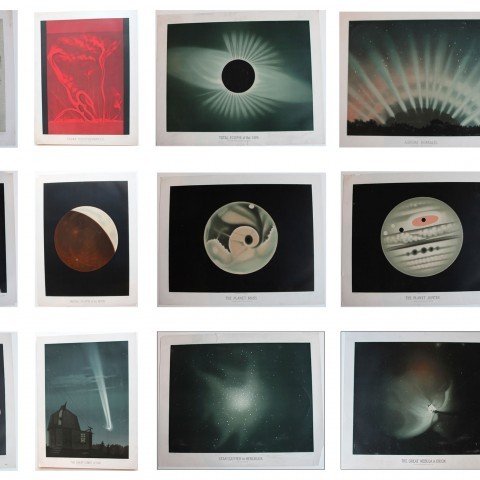Étienne Léopold Trouvelot (December 26, 1827–April 22, 1895) was a French artist, astronomer and amateur entomologist. He is noted for the unfortunate introduction of the Gypsy Moth into North America.
Trouvelot was born at Aisne, France. During his early years he was apparently involved in politics and had Republican leanings. Following a coup d'état by Louis Napoleon in 1852, he fled with his family to the United States. They settled in the town of Medford, Massachusetts, a suburb of Boston, at the address of 27 Myrtle St. There he supported himself and his family as an artist.
Trouvelot had an interest as an amateur entomologist. In the U.S., silk-producing moths were being killed off by various diseases. Trouvelot was very interested in lepidoptera larvae including native N. American silk moths which he believed could potentially be used for silk production. For reasons that remain unknown, Trouvelot brought some Gypsy Moth egg masses from Europe in the mid-1860s and was raising gypsy moth larvae in the forest behind his house. Unfortunately, some of the larvae escaped into the nearby woods. He immediately realized the potential problem he had caused and notified some nearby entomologists, but nothing was done.
Shortly following this incident, Trouvelot lost interest in entomology and turned to astronomy. In this field he could put his skills as an artist to good use by illustrating his observations. His interest in astronomy was apparently aroused in 1870 when he witnessed several auroras.
When Joseph Winlock, the director of Harvard College Observatory, saw the quality of his illustrations, he invited Trouvelot onto their staff in 1872. In 1875 he was invited to use the U. S. Naval Observatory to use the 26-inch refractor for a year. During the course of his life he produced about 7,000 quality astronomical illustrations. 15 of his most superb pastel illustrations were published by Charles Scribner's Sons in 1881. He was particularly interested in the Sun, and discovered "veiled spots" in 1875.
Besides his illustrations, he published about 50 scientific papers.
By 1882, Trouvelot had returned to France and joined the Meudon Observatory. This was a few years before the magnitude of the problem caused by his Gypsy Moth release became apparent to the local government of Massachusetts. He died in Meudon, France. The Gypsy Moth was considered a serious pest and attempts were underway to eradicate it (ultimately these were unsuccessful). To this date, the gypsy moth continues to expand its range in the United States, and together with other foliage-eating pests, cause an estimated $868 million in annual damages.

